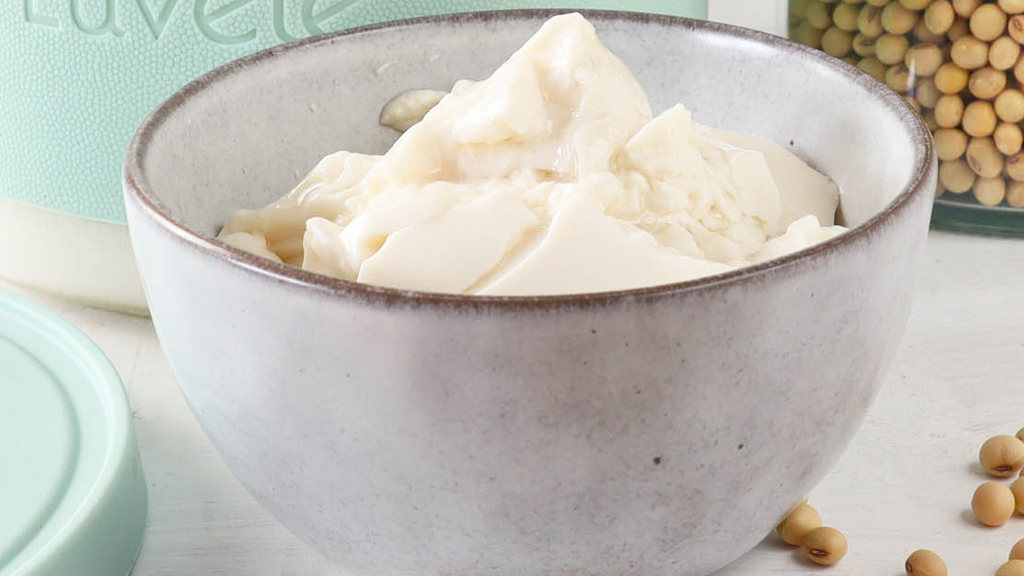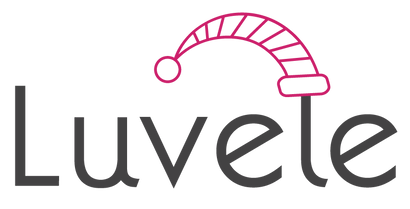Your Cart is Empty
Add description, images, menus and links to your mega menu
A column with no settings can be used as a spacer
Link to your collections, sales and even external links
Add up to five columns
Add description, images, menus and links to your mega menu
A column with no settings can be used as a spacer
Link to your collections, sales and even external links
Add up to five columns

Homemade soy milk yogurt without added thickener
Barb Hodgens
Barb Hodgens loves to cook with alternative, healthy whole food ingredients, with a focus on gut health. Barb has overcome her own gut health issues through healthy eating. Share your ideas, comments and photos at the end of this post :)

Plant-based yogurt that sets like a charm.
A big thank you to the yogurt lovers in our community for sharing the science on homemade soy milk. Soy milk is the only plant-based milk that naturally thickens as it cultures. Wow, we did not know this and didn’t fully believe it until we tried it ourselves! The process is akin to cooking soy milk to make tofu. With this method you can truly enjoy pure, homemade soy milk yogurt without any additives.
This homemade soy milk yogurt without added thickener is the perfect example of how easy it can be to make healthier versions of your favourite vegan speciality foods at home. Making soy milk yogurt is a little time-consuming but the simple process is worth the wait. Not to mention you only need two ingredients to make protein packed, probiotic, vegan yogurt that sets like a charm. And best of all, this method makes approx. 2 litres of homemade yogurt for the price of a cup of soy beans!

THE TASTE
Homemade soy milk yogurt has a strong flavour and might taste quite different from the sugar sweetened store-bought variety you are familiar with. If you like sweeter yogurt, add sweeteners, vanilla, jam, or fruit after it has chilled to suit your taste.
SOAKING SOY BEANS
It’s well known that legumes can cause tummy issues. Soaking soy beans overnight, softens the beans for blending but also helps to make the beans more digestible. If you are extra sensitive, adding a teaspoon of apple cider vinegar, lemon juice or whey to your beans while they are soaking will help draw out more of the phytic acid content in the beans.

COOKING SOY MILK IS AN ESSENTIAL STEP
Soybeans are a legume that can’t be eaten raw, so unlike other homemade plant-based milk methods, soy milk must be cooked before consuming. Boiling the soy milk is an essential step. The skin that forms on the milk is an indication that the plant protein has changed, and the soy milk is ready for consumption. Cooking the soy milk also changes the structure of the plant protein and this is what allows the yogurt to set without the need for thickeners. If the soy milk is not cooked properly, it might cause an upset stomach and even be toxic.
SOMETHING SWEET FOR THE GOOD BACTERIA.
In traditional dairy milk yogurt, the bacteria in starter culture thrive on the sugar (lactose) content, naturally found in milk. The bacteria populating your soy milk must have something to feed on to allow the culturing process to take place. One teaspoon of sugar is enough to kick start fermentation.
STARTER CULTURE
You will need a yogurt starter culture to introduce the fermentation of bacteria to your soy milk. Use the amount of starter culture indicated on the packet. View the Luvele range of starter cultures here.

PREPARATION
Before you begin, sterilise the Luvele yogurt making glass jar and any utensils you use, in boiling hot water. Do this by boiling a kettle and carefully pouring the hot water in the jar and over the equipment. The danger of not sterilising is that other bacteria may overpower your culture and affect the quality of your ferment.

Homemade soy milk yogurt without added thickener
Luvele
Rated 5.0 stars by 2 users
This homemade soy milk yogurt without added thickener is the perfect example of how easy it can be to make healthier versions of your favourite vegan speciality foods at home.
Ingredients
- 1 cup of organic soybeans
- Water for soaking
- 3 cups water for blending
- 5 cups of water for cooking
- 1 teaspoon of white sugar
- Non-dairy yogurt starter culture
Directions
- Soak the soybeans in water for six hours or overnight.
- Drain and rinse the beans.
- Add the soaked beans to the Vibe blender jug with 3 cups of water. Secure the lid on the blender jug, choose ‘smoothie’ mode and blend for 40-60 seconds.
- Pour the mixture into a nut milk bag. Squeeze and twist the bag until all the liquid drains into the bowl. Discard or compost the left-over soy pulp.
- Pour the milk into a large saucepan. Add another 5 cups of water.
- Gently simmer the milk for 15 minutes. Keep a close eye on the milk as it comes to the boil. It can rise and spill over very quickly.
- While heating, remove the foam that starts floating on top.
- Remove from the stove-top. Let the milk cool down in the saucepan, then remove the skin that forms on the top.
- Allow the soy milk to cool down to below 108° F (42° C). Pour the soy milk into a sterile yogurt making jar.
- Add 1 teaspoon of sugar and your preferred starter culture and gently whisk it in.
- The soy milk is now ready to begin fermentation. Place the glass yogurt jar into your yogurt maker. Pour water slowly into the base of the yogurt maker. The water must not be filled over the ‘tall line’ indicated on the inside wall of the maker. Place the cover lid on. Use the digital control panel to set the temperature to 38° C (100° F), and the time to 15-hours.
- When the timer goes off, fermentation is complete. Condensation will have collected under the cover lid. Please take care removing it and allow the water to drip into the water bath, instead of your bench. Switch the yogurt maker off and remove the jar. Straight from the maker the yogurt will be warm but set firm. Be gentle with the warm yogurt and don’t stir it. Place the jar in the fridge for at least 6 hours to chill and set.
- After homemade soy milk yogurt without added thickener is chilled it will be set in a firm mass with a small amount of water separation on top. Spooning this off is optional.
- Add sweeteners to taste.
Recipe Video



PIN THIS RECIPE


Homemade soy milk yogurt without added thickener

Plant-based yogurt that sets like a charm.
A big thank you to the yogurt lovers in our community for sharing the science on homemade soy milk. Soy milk is the only plant-based milk that naturally thickens as it cultures. Wow, we did not know this and didn’t fully believe it until we tried it ourselves! The process is akin to cooking soy milk to make tofu. With this method you can truly enjoy pure, homemade soy milk yogurt without any additives.
This homemade soy milk yogurt without added thickener is the perfect example of how easy it can be to make healthier versions of your favourite vegan speciality foods at home. Making soy milk yogurt is a little time-consuming but the simple process is worth the wait. Not to mention you only need two ingredients to make protein packed, probiotic, vegan yogurt that sets like a charm. And best of all, this method makes approx. 2 litres of homemade yogurt for the price of a cup of soy beans!

THE TASTE
Homemade soy milk yogurt has a strong flavour and might taste quite different from the sugar sweetened store-bought variety you are familiar with. If you like sweeter yogurt, add sweeteners, vanilla, jam, or fruit after it has chilled to suit your taste.
SOAKING SOY BEANS
It’s well known that legumes can cause tummy issues. Soaking soy beans overnight, softens the beans for blending but also helps to make the beans more digestible. If you are extra sensitive, adding a teaspoon of apple cider vinegar, lemon juice or whey to your beans while they are soaking will help draw out more of the phytic acid content in the beans.

COOKING SOY MILK IS AN ESSENTIAL STEP
Soybeans are a legume that can’t be eaten raw, so unlike other homemade plant-based milk methods, soy milk must be cooked before consuming. Boiling the soy milk is an essential step. The skin that forms on the milk is an indication that the plant protein has changed, and the soy milk is ready for consumption. Cooking the soy milk also changes the structure of the plant protein and this is what allows the yogurt to set without the need for thickeners. If the soy milk is not cooked properly, it might cause an upset stomach and even be toxic.
SOMETHING SWEET FOR THE GOOD BACTERIA.
In traditional dairy milk yogurt, the bacteria in starter culture thrive on the sugar (lactose) content, naturally found in milk. The bacteria populating your soy milk must have something to feed on to allow the culturing process to take place. One teaspoon of sugar is enough to kick start fermentation.
STARTER CULTURE
You will need a yogurt starter culture to introduce the fermentation of bacteria to your soy milk. Use the amount of starter culture indicated on the packet. View the Luvele range of starter cultures here.

PREPARATION
Before you begin, sterilise the Luvele yogurt making glass jar and any utensils you use, in boiling hot water. Do this by boiling a kettle and carefully pouring the hot water in the jar and over the equipment. The danger of not sterilising is that other bacteria may overpower your culture and affect the quality of your ferment.
:recipekit:



PIN THIS RECIPE


Subscribe
Sign up to get weekly healthy recipes & information on new product releases.
Item is added to cart


